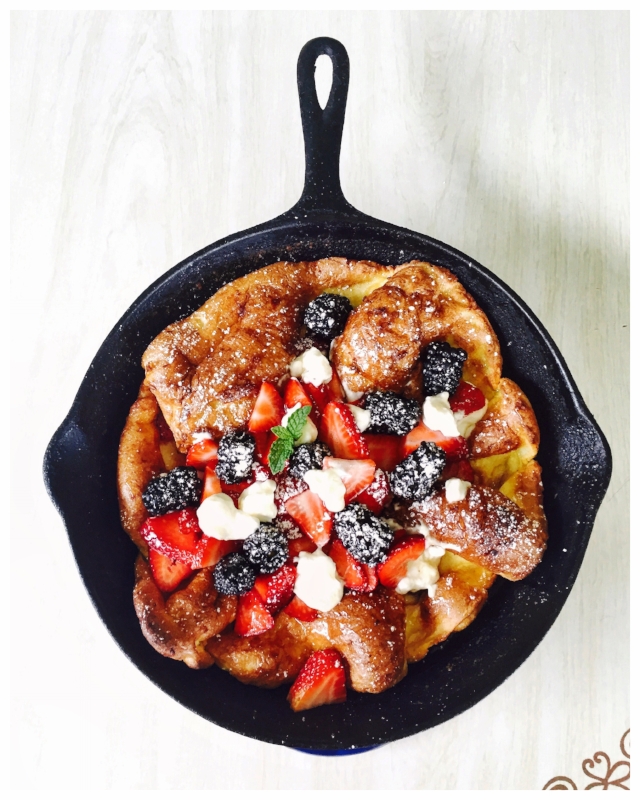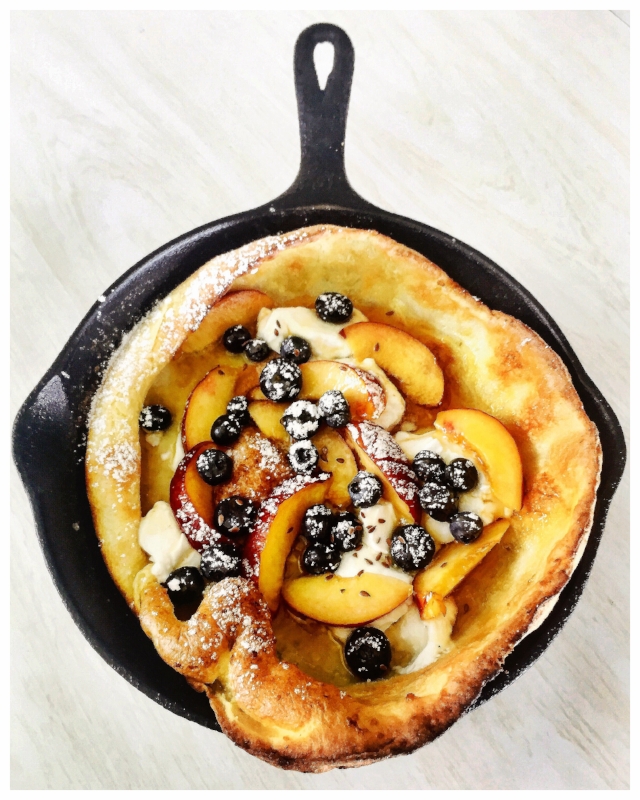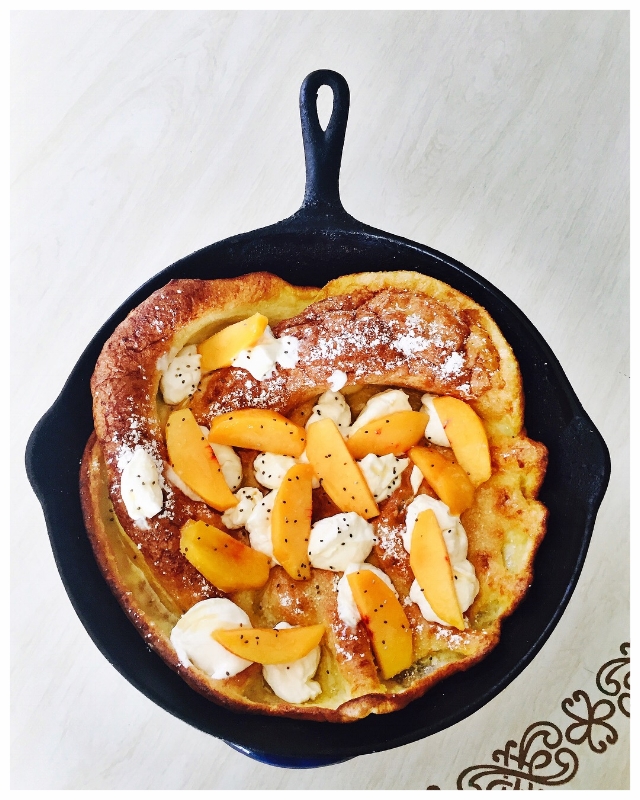2. Basic Batter
I'm talking three ingredients basic...
2 eggs + 1/2 cup milk + 1/2 cup flour = batter
3. Butter
Butter you could say is an additional ingredient however, it's really more about the butter's role in the cooking process and its relationship to your pan. The goal is a "pool" of butter. Contrary to everything you think you know about butter being some evil fat, trust me when I tell you that the butter is your workhorse. Do yourself a favor and buy quality and use it generously. You want enough butter to melt and swirl around the pan, coating all sides with plenty to pool in the pan when completely melted. I typically use about a 1/2 stick. You can certainly get by with less but I find that doing so influences the puff factor and that puff is what it's all about! The butter helps the batter develop a terrain of sorts, and the nooks and crannies take-on almost a croissant type characteristic. Butter makes the pastry... end of story.
4. Toppings
Ok, this is where your creativity gets its license. The most basic of Dutch Baby presentations might consist of a sprinkle of powdered sugar and a squeeze of lemon juice. Tasty? Yes. Nutritionally sound? Not so much... I personally prefer to enhance the nutritional density of my Dutch Babies by including the following formula:
creamy + fresh + drizzle + sprinkle = topping
Doing so adds more nutritional value thereby helping to reduce a carb heavy spike in blood sugar. I try to add things to help boost protein and fiber like nuts and seeds, dairy products, and fresh fruit. As for assembly, below is a list of some things I commonly use in each category.
Creamy items: Yogurt, ricotta cheese, cream cheese, whip cream, etc... These item tend to soften when met with the hot Dutch Baby and help mix the other toppings into a delicious mixture of yum! I'm not sure how else to describe it, but it's for this very reason I prefer to add my cream item first. It also serves as a landing pad for the other toppings.
Fresh stuff: I typically use fruit but veggies could work too. I like berries or things sliced kinda small to scatter around whatever creamy base I used.
Drizzles: Honey and syrups are my go-to drizzles but occasionally I'll stew some fruit (especially if I'm using frozen fruit) for a hybrid of the fresh and the drizzle.
Sprinkles: Nuts, seeds, herbs, powdered sugar, or any specialty sugar or spices... This is the final zing! It's the small touch of detail to garnish the Dutch Baby before serving.











